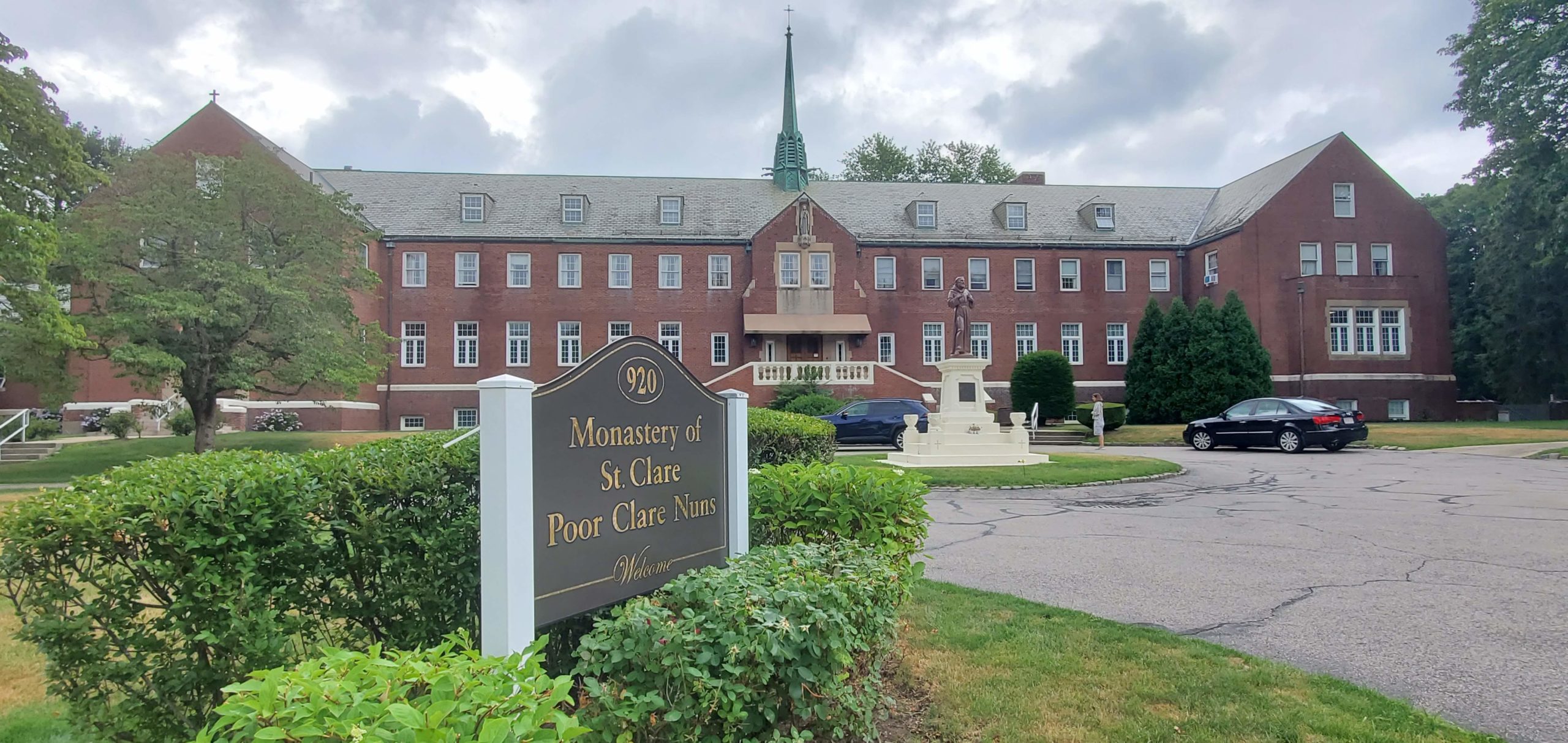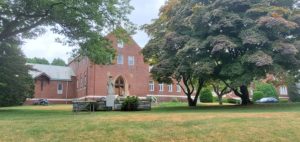
01 Aug Past meets future at the Monastery of St. Clare in Jamaica Plain
After more than a century in Boston and decades in Jamaica Plain, the nuns of the contemplative of the Franciscan Monastery of St. Clare at 920 Centre Street in Jamaica Plain wish to downsize. Initial plans to demolish the landmark building and construct new housing next to the Arnold Arboretum were opposed by neighbors and activists concerned for both preservation and opportunities for affordable housing. In recent media, developer Holland Properties stated it is revising its plans for the site in order to preserve the historic building. We wanted to know more about the Poor Clares, their presence in Boston, and the history of their building in Jamaica Plain.
The Franciscan Monastery of St. Clare at 920 Centre Street in Jamaica Plain is unusual for its presentation of women’s religious architectural design in New England. A work of noted architect Edward T.P. Graham, known for his many ecclesiastical commissions in New England and the Midwest, the monastery building also exemplifies the expansion of the Catholic church in Boston.
The Order of the Poor Clares, founded in Italy in 1305, was established in the United States in 1875 when a group of nuns founded the order’s first American monastery in Omaha, Nebraska. It was not until 1906 that a group of nuns from Evansville, Indiana were dispatched to Boston for the purpose of establishing a monastery. By 1912, there were 24 nuns housed in their building on Bennet Street in the South End. The order stayed in the South End until they raised enough money and received authorization by the Archbishop of Boston to purchase land in Jamaica Plain for the purpose of building a new monastery building in 1932.
There are several cloistered women’s monasteries in New England. The Adorers of the Precious Blood, established in Manchester NH in 1861, is perhaps the oldest contemplative order in New England. Boston’s Carmel foundation, located in Roxbury since 1894, is among the region’s oldest. The Carmel sisters’ complex, built in 1896, is perhaps the oldest purpose-built monastery in New England and is listed on the National Register of Historic Places.
While there are dozens of convents in the region that have housed nuns whose work supported parochial schools, health services, and outreach, the Monastery of St. Clare in Jamaica Plain is a contemplative order whose nuns are mostly prayerful and rarely leave their building. The structure they commissioned in Jamaica Plain contains the deliberate spaces of a cloistered order: walled space, chapel, refectory, and residential spaces, all within a single extensive, but connected, structure. The Jamaica Plain monastery also features a high-walled garden and loggia which provided important private access to outdoor space.

The Order of Poor Clares is one of several Catholic orders of nuns in the United States, and their appearance and expansion, much like the Catholic Church more generally, parallels the surge of Catholic immigrant arrivals from Europe to the United States in the late 19th and early 20th centuries. The Boston foundation of Poor Clares’ expansion to Jamaica Plain follows the general growth and expansion of Boston’s Catholic population and Catholic churches to more suburban locales of Jamaica Plain and West Roxbury as new housing was built and families became more affluent.
The Poor Clare’s work extended beyond its walls and beyond Boston, however. Nuns from the Boston Poor Clares were instrumental in forming and leading a federation of Poor Clares in the US, and from this location, foundations of Poor Clare monasteries were established five new locations in the US and abroad, including the foundation in Kiriushi, Japan.
One of the most prolific architects in Boston, and called the “dean of Boston architects” at his passing in 1964, Edward T.P. Graham was known for his Catholic church commissions in New England and the Midwest. However, in Boston he is known for other landmarks: St. James African Orthodox Church in Roxbury, the Forsyth Dental School for Children in the Fenway, the City Hall Annex at 20 Court Street, and St. Elizabeth’s Hospital in Brighton (now demolished). And throughout the greater Boston area, Graham was responsible for many public and parochial schools.
Preservation of the monastery – prominently located on Centre Street in Jamaica Plain’s Moss Hill neighborhood – honors the history of women’s service in the Catholic church in Boston and helps to tell the story of Jamaica Plain’s 20th century development.



